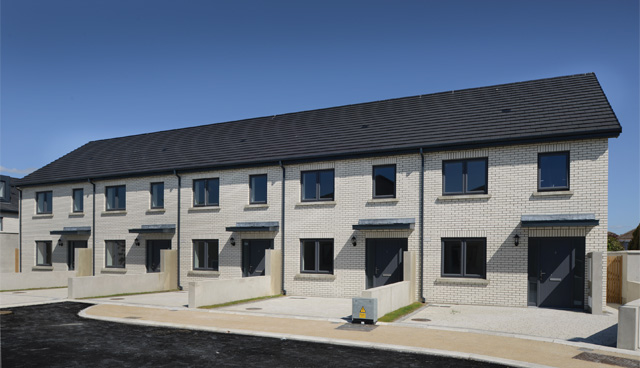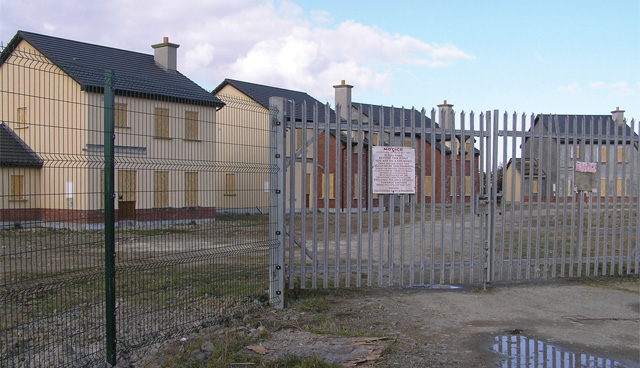
Social housing: A socio-economic solution
21st July 2020
Oaklee Housing: Looking to the future
21st July 2020National Vacant Housing Reuse Strategy: Update

The National Vacant Housing Reuse Strategy was developed as part of Pillar 5 of Rebuilding Ireland in an attempt to tackle one of the largest issues in the Irish housing market: the proliferation of empty houses throughout the country. May 2020 saw the release of the latest progress report on the Strategy’s implementation.
The Strategy “strives to provide a targeted, effective and coordinated approach to identifying and tackling vacancy across Ireland”. Drawing on work between the Department of Housing, local authorities and other stakeholders that began in 2016, the Strategy was published in 2018, intending to cover the period until 2021 and “draw together all of the strands of ongoing work in one document with a clear vision for moving forward”.
The Strategy is an overarching roadmap that outlines the processes by which initiatives will be co-ordinated and implemented to tackle residential vacancy across Government. The overall aim of the Strategy is to ensure the country is “utilising our existing housing stock to the fullest extent possible and aims, inter-alia, to return as many recoverable vacant properties back to viable use as possible, increasing the supply of sustainable housing available, while also revitalising the vibrancy of local communities”.
To go about achieving these aims, the Strategy outlines five key objectives.
- Establish robust, accurate, consistent, and up-to-date data sets on vacancy.
- Bring forward measures to ensure, to the greatest degree possible, that vacant and underused privately owned properties are brought back to use.
- Bring forward measures to minimise vacancy in Social Housing Stock.
- Continued engagement with and provision of support to key stakeholders to ensure suitable vacant properties held by banks, financial institutions and investors are acquired for social housing use.
- Foster and develop cross-sector relationships, collaborating in partnership to tackle vacant housing matters.
These objectives are broken down into a number of actions and goals per objectives, some falling under the responsibility of different authorities and departments and some of which had already commenced before the release of the Strategy. The progress report released in May 2020 provides a detailed breakdown of how the steps within each objective are progressing.
Objective 1
For the establishment of “robust” data sets on vacancy, three sub-objectives were outlined: the establishment of a Vacant Homes Unit within the Department of Housing and the appointment of a Vacant Homes Officer in local authorities; the establishment of a vacancy sub-group as part of the Department’s Housing Data Analytics Group with members of the Department, the CSO, local authorities and the Housing Agency; and the conduction of a pilot survey to ensure the methodology is robust and reliable.
The Vacant Homes Unit was established in August 2017, its establishment having been noted in the original strategy document. The updates provided in the progress report state that funding to support Vacant Home Office is continuing and was at €50,000 per annum in 2019/20. All 32 local authorities were said to have drawn down their funding for 2019/20 and submitted their Vacant Homes Action Plans. The vacancy sub-group has been established and the pilot survey concluded, with a full roll out at national level “being considered”.
Objective 2
Four sub-objectives were outlined in order to ensure that privately owned vacant are brought back to use “to the greatest degree possible”: gaining a better understanding of the barriers to doing so; continuously reviewing and evaluating existing schemes; addressing vacancy in commercial/over shop premises, reducing regulatory barriers where possible; and examining the potential for the greater use of legislative powers available to local authorities.
“The Vacant Homes Unit was established in August 2017. The updates provided in the progress report state that funding to support Vacant Home Office is continuing and was at €50,000 per annum in 2019/20. All 32 local authorities were said to have drawn down their funding for 2019/20 and submitted their Vacant Homes Action Plans.”
The update says that as of February 2020, 161 homes have been delivered back into use under the Repair and Lease programme, which has also seen local authorities acquire and renovate 545 homes since its introduction. The Bringing Back Homes Manual was launched in April 2019 to advise on the reuse of existing buildings and a mail shot was issued to Licensed Property Service Providers in order to identify and assist with vacants, particularly apartments, in June 2019.
In terms of regulation, the Planning and Development (Amendment) (No. 2) Regulations 2018 mean that compulsory purchase orders can now be undertaken by local authorities.
Objective 3
Four key action points were outlined in order to minimise vacancy in social housing: review of funding mechanisms on an ongoing basis; work with local authorities to introduce a preventative maintenance approach; ensure that choice based letting (CBL) is implemented as widely as possible; and engage with the Housing Agency and approved housing bodies (AHBs) to support their “significant” role in bringing houses back into use.
Funding of €2.7 million was made available for the Vacant Homes Unit for 2020, with the unit starting an online and overseas advertising campaign in March. Surveys undertaken by the Department of Housing across 2017 and 2018 revealed that the authorities who have implemented CBL have found it to have had a positive impact on allocation success rates.
The most recent survey found that 17 of the 31 local authorities are using CBL, with a further six examining its feasibility. Cork City and County councils reported their refusal rates having dropped from 50 per cent to 16 per cent and 30 per cent to 7 per cent since utilising CBL.
Objective 4
The four objectives for engagement with financial institutions holding vacant properties in an attempt to acquire them for social housing use were: capital funding in place for the Housing Agency to purchase properties; ensure suitable portfolios are acquired; Housing Agency engagement with NAMA; and for the Department of Housing to engage with local authorities regarding unfinished estates.
As of quarter four of 2019. The Housing Agency-managed revolving acquisitions fund of €70 million has made a total of 784 properties available to AHBs, with another 93 in the process of being secured. The Housing Agency has also supported local authorities in acquiring 440 homes from financial institutions, with 62 currently proceeding through to sale.
Objective 5
The four goals outlined for the development of cross-sector relationships to address vacancies were: draw from the National Planning Framework (NPF); develop and roll out an Urban Regeneration Scheme; consider utilisation of the Urban Regeneration and Development Fund (URDF) and support the submission of proposals to the Rural Regeneration and Development Fund (RRDF); and work with other departments to address rural vacancies.
National Policy Objective 16 of the NPF concerns tackling rural decline through addressing rural vacancy, while Objective 25 concerns using the RRDF to co-ordinate this approach across various departments. In its first call for applications, the URDF supported 88 proposals out of 189 applications from public bodies in 2018. The second submission window was recently closed in May 2020.
The RRDF’s allocation for 2019-22 is €315 million. The Department of Housing and Housing Agency have recently submitted policy proposals to the Department of Health regarding the sale and/or renting of properties left vacant by owners who have entered long-term residential care. The Department of Health is currently considering the proposals, which would require changes to the Nursing Homes Support Scheme Act if approved. With an estimate 200,000 vacant homes in the country at the beginning of 2018 when the Strategy was published, the progress within the report will be welcomed, but much work remains to be done.





